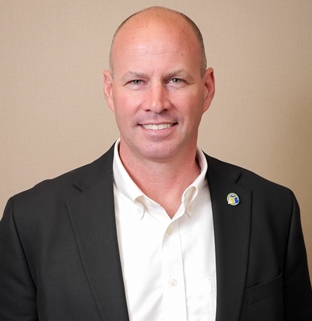Mark Richter knows about internships. They’re a big way his small credit union First United Credit Union($27.9M, Grandville, MI) identifies talent and adds to the organizational capacity at his 12-employee, 4,800-member institution.
The credit union recently worked with local colleges to hire a couple of interns for the marketing department and now is seeking to fill accounting and bilingual services spots.
CU QUICK FACTS
FIRST UNITED CREDIT UNION
Data as of 09.30.15
- HQ: Grandville, MI
- ASSETS: $27.9M
- MEMBERS: 4,775
- BRANCHES: 1
- 12-MO SHARE GROWTH: -6.60%
- 12-MO LOAN GROWTH: 0.83%
- ROA: 0.80
First United was chartered in 1937 to serve the Leonard Refrigerator Plant. It later became Kelvinator Employees Credit Union and then in 2013 switched to a state charter and expanded its field of membership from one county in western Michigan to 22.
Identifying promising young careerists is a goal for the suburban Grand Rapids credit union as it strives to serve this new market, says Richter, First United’s president and CEO. But interns also come with the challenge of training them to be productive in the short time they’re with the credit union.
To overcome that challenge, Richter advises credit unions to set clear expectations for both sides and have a realistic a plan for interns.
You don’t want them just sitting around, but you also can’t expect them to come in, sit down, and audit a loan file, Richter says.
There’s also the reality that interns will need four to six weeks of training before they can provide value back to the credit union, even after the requisite onboarding that takes place with every new employee.
That’s especially true for the first accounting interns First United is taking on, students who might find themselves posting ACH transactions, for example, with someone looking over their shoulder.
If you make a mistake as a marketing intern, it’s not as potentially catastrophic, Richter says.
Richter says his interns’ work schedules are flexible, usually about 15 to 20 hours a week, and structured around school schedules, especially when exams roll around. This kind of flexibility helps the credit union attract top-notch interns. That, and First United takes its own intern program responsibilities seriously.
Make sure you do the things the students need to get proper credit for their internship, Richter says. For example, I’ve had to fill out evaluations about the program for the school.
You don’t want them just sitting around, but you also can’t expect them to just come in, sit down and audit a loan file.
But that’s the traditional internship model. This summer, First United explored a different model as well.
A New Kind Of Internship
 |
| Mark Richter, First United Credit Union |
First United flipped the internship paradigm on its head when the credit union hosted experienced staff from Grand Rapids-based CU*Answers in what the technology and related services provider to approximately 225 credit unions says is the first CUSO-to-CU internship program of its kind.
One of the CU*Answers interns was a human resources specialist who spent this past summer helping First United create a new set of job descriptions. The second was an account services compliance specialist who spent about eight weeks looking at how things like new system configurations impact operations from the credit union’s perspective.
These were paid employees of CU*Answers, Richter says. They’re obviously at different stages of their careers than our millennial interns, and they come from a company with a couple hundred people, so they bring that perspective, too.
Richter saw the idea for the CUSO-to-CU internships develop in an email string with CU*Answers president and CEO Randy Karnes and other credit unions. And because the credit union is headquartered near CU*Answers, Richter says it made sense for First United to get it going.
Credit unions can get stuck in a rut, Karnes says. They stick to the same methods that worked in the past when they should be looking for new, creative solutions to meet our industry’s changing needs.
The internship is an example of new ways for credit unions with limited resources to access more. And for the CUSO, it benefits from the exchange of ideas and insight that comes with the immediacy of an in-person, on-site relationship.
Read more about how one thought leader views redit unions, CUSOs, and Collaboration 3.0.
According to Heather Alberta, manager of organizational development for CU*Answers, the CUSO is going to continue to seek internship partnerships, perhaps moving further afield than suburban Grand Rapids this time.
We hope other credit unions will create their own internship programs or develop other innovative resource-sharing programs, she says. They’re so important to our future and to the health of the CU-CUSO relationship.
Richter, meanwhile, says he looks forward to continuing to tap the millennial talent available in the Grand Rapids area, for their benefit and for his credit union’s.
CreditUnions.com regularly provides new perspectives on internships and developing young talent in general.Check it out